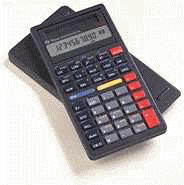Chaffey High School
Algebra I
California State Framework for Algebra
Updated 30 October 2004
|

|
In 1999, the State of California
adopted and mandated standards that affect all public high school students
and their teachers. The Standards set forth the concepts, skills
and topics appropriate for students going on to the study of Geometry and
Algebra II and are required for high school graduation.
Originally, the state expected that each student
graduating in 2004 or later would pass the California High School Exit Examination
in mathematics and complete Algebra I in order to qualify for
graduation. In the past year, these expectations have been "modified" so that
the High School Exit Examination requirement does not take effect until 2006 and
the Algebra completion requirement does not take effect until 2005.
My intent is that our class conforms to the Standards: that it
is taught in such a way as to adhere to both the spirit and the letter of those
Standards.
The following is a summary of
the Algebra Standards portion of the Mathematics Framework for California
Public Schools. The following items will be color coded according to
which module they are taught in Module A ,
Module B , Module
C, or Module D, or not
explicitly taught.
Those items not explicitly taught according to the Mastery
Mathematics model are included as time allows under current circumstances (see
my Commentary on
Algebra I at Chaffey High School).
-
Know and use the basic properties (including
closure) of the real numbers (including the
subsets of integers, rational numbers, and
irrational numbers).
-
Understand and know how to take the opposite, find the reciprocal,
take a square root,
and raise to a fractional power.
Understand and know how to use the rules of
exponents.
-
Understand absolute value
and how to solve absolute values equations and
inequalities.
-
Simplify and solve linear equations and inequalities
in one variable.
-
Know how to solve multi-step problems
(including
word problems),
involving linear equations
and linear inequalities
in one variable. Be able to explain each step.
-
Graph linear equations and find their
x-and
y-intercepts.
Graph linear inequalities.
-
Be able to tell if a point lies on a line, given
the equation of the line. Find linear equations by using the point-slope
formula.
-
Understand how slopes relate in parallel
and perpendicular lines. Find the equation of a line parallel to
and perpendicular to a given line through a given point.
-
Solve a system of two linear equations in two
variables (by substitution, elimination, and graphing). Solve a system of
inequalities by drawing its graph.
-
Add, subtract, multiply, and divide monomials and
polynomials.
Solve
problems (including word problems) by using these skills.
-
Be able to factor second- and simple
third-degree polynomials using GCF, difference of squares, perfect squares, and grouping methods.
-
Simplify fractions with polynomials
in the numerator and denominator by factoring both and reducing them to
lowest terms.
-
Add, subtract, multiply, and divide rational
expressions.
Solve challenging problems using these methods.
-
Be able to solve a quadratic equation by factoring
or by completing the square.
-
Be able to solve word problems (including rate
problems,
percent mixture problems,
etc).
-
Know what a relation and a function
are, and be able to tell if a given relation is a function.
-
Be able to find the domain and the range of a
function (by graph,
by set of ordered pairs,
or from an equation).
-
Be able to explain why a relation (defined by a
graph, by a set of ordered pairs,
or by an equation) is a function or not.
-
Know how to use the quadratic formula, and how it comes from "completing the square."
-
Be able to use the quadratic formula
to find the roots of quadratic equations.
-
Be able to graph quadratic equations
and identify their roots as the x-intercepts of the graph.
-
Be able to tell using the discriminant whether the graph of a quadratic function will intersect the x-axis in
zero, one, or two points.
-
Solve physical problems (such as motion
under gravitational force) using quadratic equations.
-
Use and know simple aspects of logical argument
such as the difference between deductive and inductive reasoning, hypothesis and
conclusion, and use of counterexamples in proofs.
-
Use properties of the number system
to judge the validity of results, to justify procedural steps, and to prove/disprove
statements.
If
a student has difficulty with any of the items listed above, it
is imperative that they immediately arrange tutoring sessions with Mr.
James or another person who is competent with algebra and acquainted with
these standards.
You may obtain more information from the California
Department of Education's web site for K-12
mathematics standards.
Back
to Algebra...
Back
to main...
